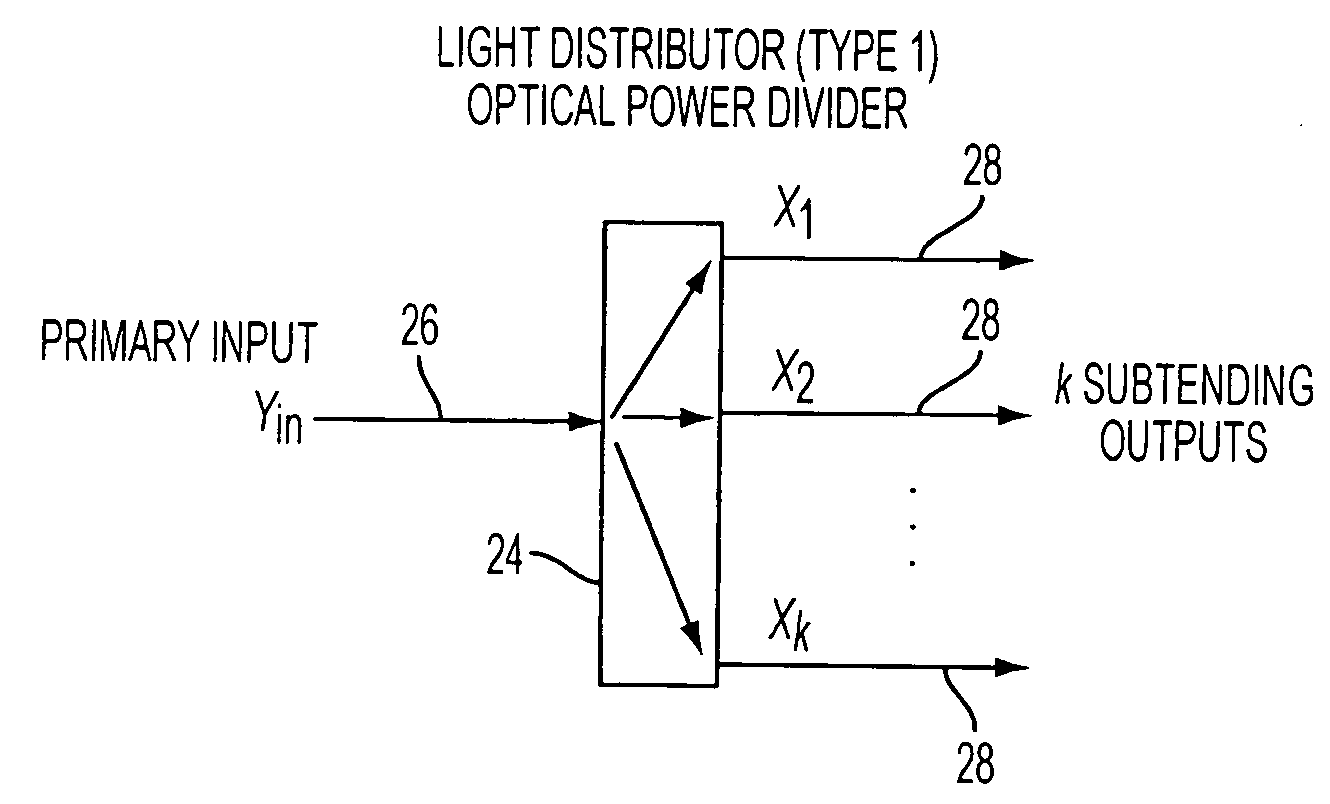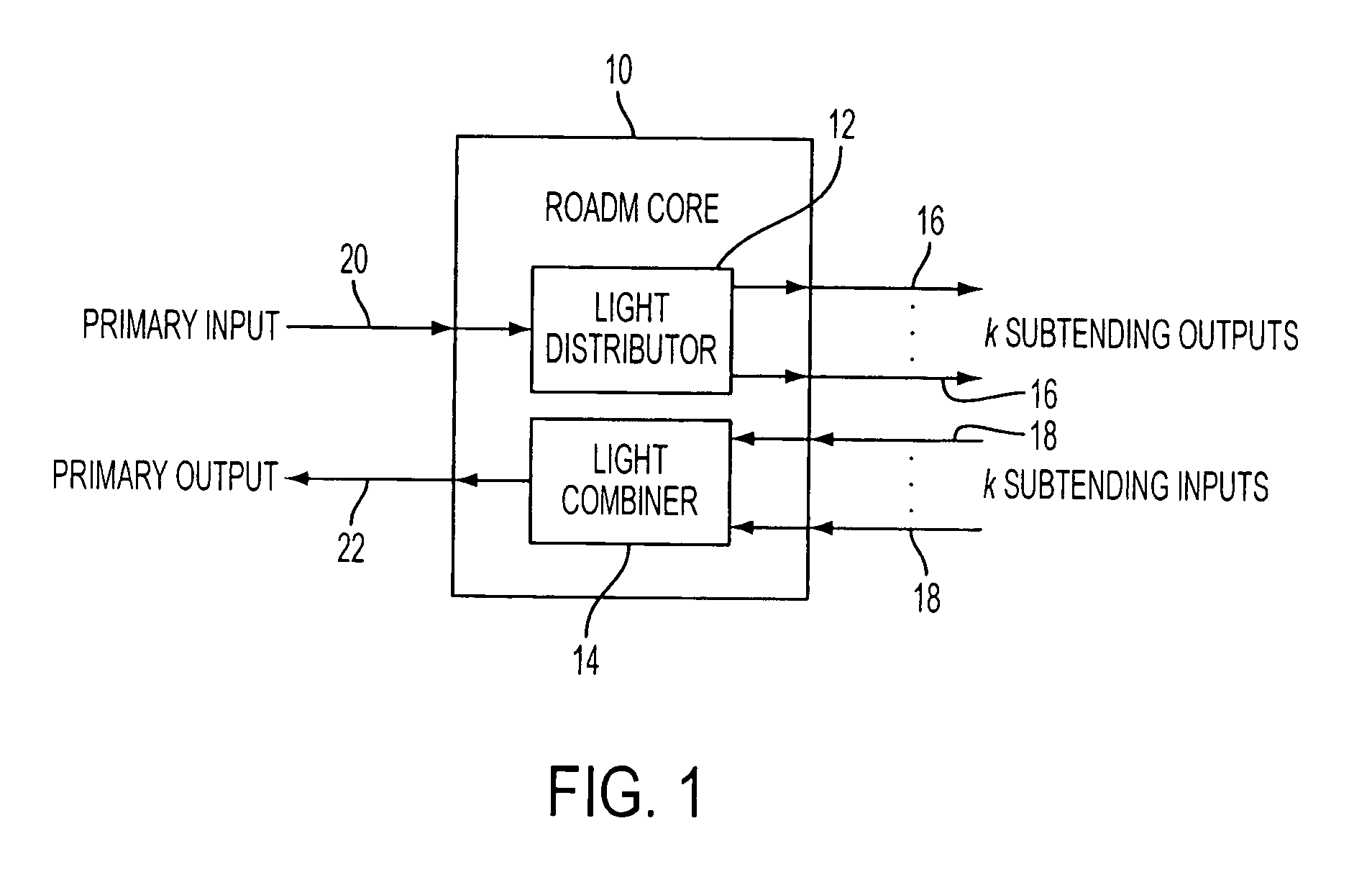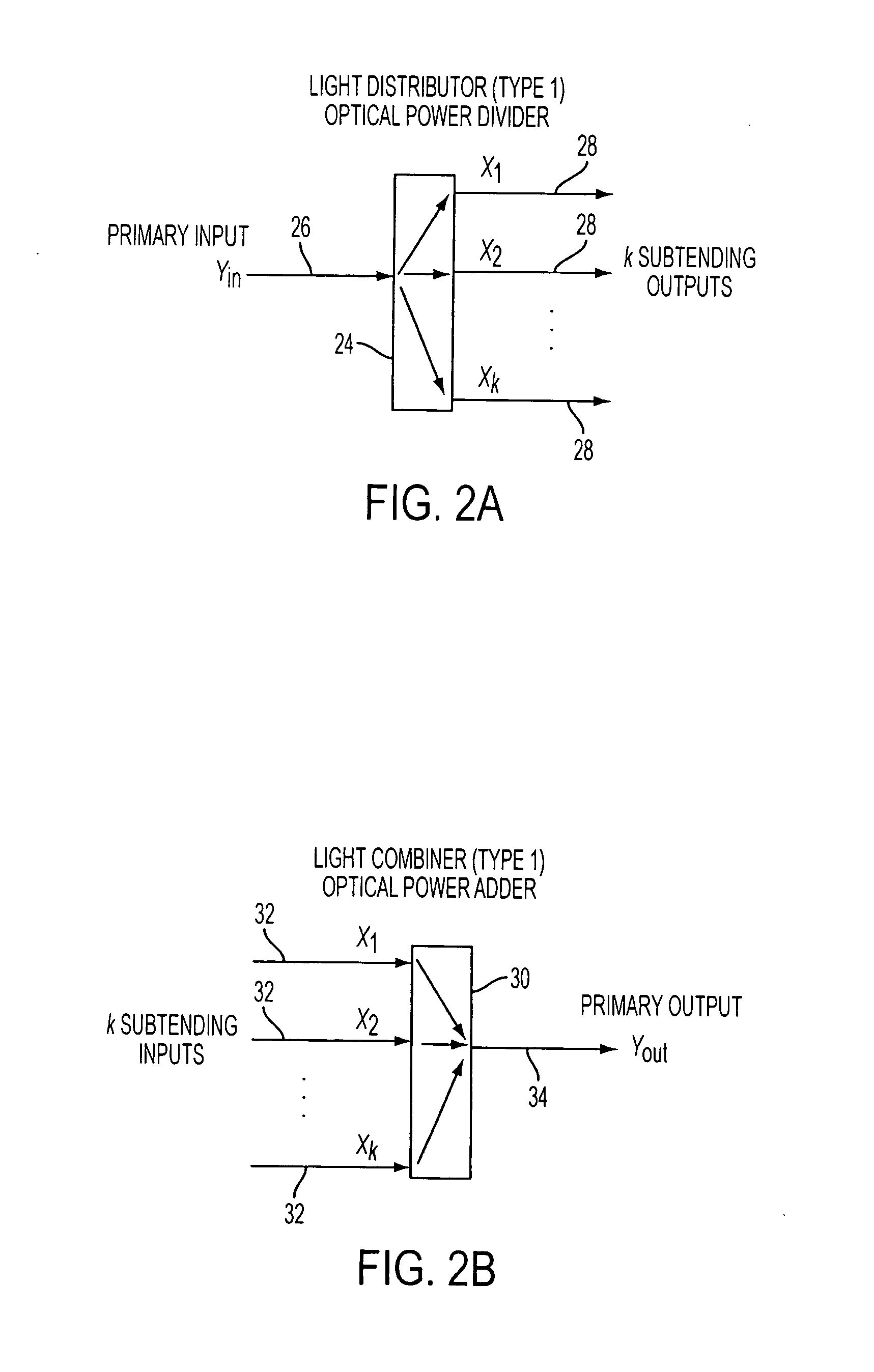Reconfigurable optical add drop multiplexer core device, procedure and system using such device, optical light distributor, and coupling-ratio assigning procedure
a technology of add drop multiplexer and core device, applied in the field of wavelength division multiplexing, can solve problems such as limiting their usefulness, and achieve the effect of maximizing the power level of the optical wavelength
- Summary
- Abstract
- Description
- Claims
- Application Information
AI Technical Summary
Benefits of technology
Problems solved by technology
Method used
Image
Examples
example embodiment # 1
OPTICAL NODE EXAMPLE EMBODIMENT #1
[0100]FIGS. 11 through 14 represent example embodiments of a first optical node. These diagrams illustrate how the FIG. 10(a) ROADM core device can be used in one of three different example modes of operation. The first mode is a two-degree ROADM mode in which each ROADM has k add / drop ports. The second mode is a three-degree ROADM mode. In this mode the add and drop ports comprise a first set of add ports and a first set of drop ports in which the add and drop ports function only as add and drop ports, and a second set of add ports and a second set of drop ports in which the add and drop ports function as both add and drop ports, respectively, and as express ports that are connectable to another ROADM core device. In the second mode, each ROADM has k−1 add ports in the first set and k−1 drop ports in the first set, where k represents the total number of add ports when the add ports in both sets of add ports are combined and k also represents the to...
example embodiment # 2
OPTICAL NODE EXAMPLE EMBODIMENT # 2
[0168]FIG. 18 shows an example embodiment of optical node embodiment #2. More specifically, FIG. 18 shows a four degree node (N=4) 760 including four ROADM core devices 762, 764, 766, and 768. Each of the ROADM core devices shown in FIG. 18 can be the same as, for example, the FIG. 15B ROADM core device, although they are not limited thereto. It is within the scope of the example embodiment for the optical node 760 shown in FIG. 18 to include additional elements and to replace each of the ROADM cores devices shown in FIG. 18 and each of the components of each ROADM core device with any other suitable component (or components) that performs (or perform) the functions thereof. In the node 760, on each ROADM 762, 764, 766, and 768, there are three ports used as express ports, and each ROADM has k−2 add / drop ports that function only as add and drop ports.
[0169]More specifically, the ROADM 762 can comprise a type-4 light distributor 770 receiving optica...
example embodiment # 3
OPTICAL NODE EXAMPLE EMBODIMENT #3
[0238]FIG. 24 shows optical node example embodiment #3 comprising node 1400. This example embodiment can be, but is not limited to being, a simplified view of an example embodiment of an optical node using ROADM example embodiment #3. (For simplicity, the input and output amplifiers are not shown.) More specifically, optical node 1400 can include four ROADM core devices 1402, 1404, 1406, and 1408 that can be the same as, for example, the ROADM core devices shown in FIG. 20d, although they are not limited thereto. It is within the scope of the example embodiment for the optical node 1400 to include additional elements not shown in FIG. 24 and for any of the FIG. 20d ROADM core devices in the node 1400 to be replaced by any other component (or components) that performs (or perform) the functions thereof. It is also within the scope of the example embodiment for any of the expansion ports shown in FIGS. 20a-20d, 21, 22, 23, and 24 to also be added to t...
PUM
 Login to View More
Login to View More Abstract
Description
Claims
Application Information
 Login to View More
Login to View More - R&D
- Intellectual Property
- Life Sciences
- Materials
- Tech Scout
- Unparalleled Data Quality
- Higher Quality Content
- 60% Fewer Hallucinations
Browse by: Latest US Patents, China's latest patents, Technical Efficacy Thesaurus, Application Domain, Technology Topic, Popular Technical Reports.
© 2025 PatSnap. All rights reserved.Legal|Privacy policy|Modern Slavery Act Transparency Statement|Sitemap|About US| Contact US: help@patsnap.com



